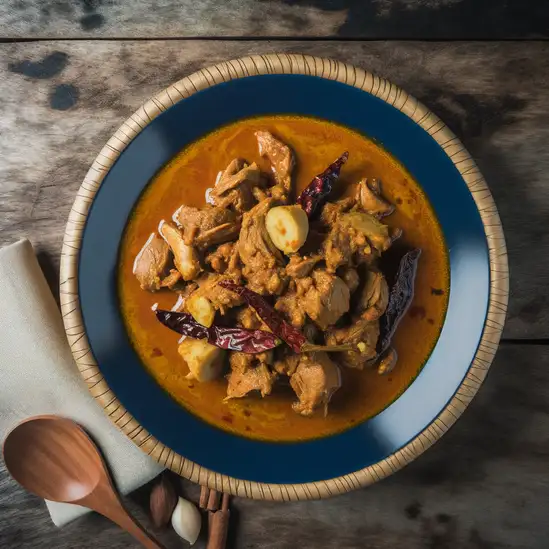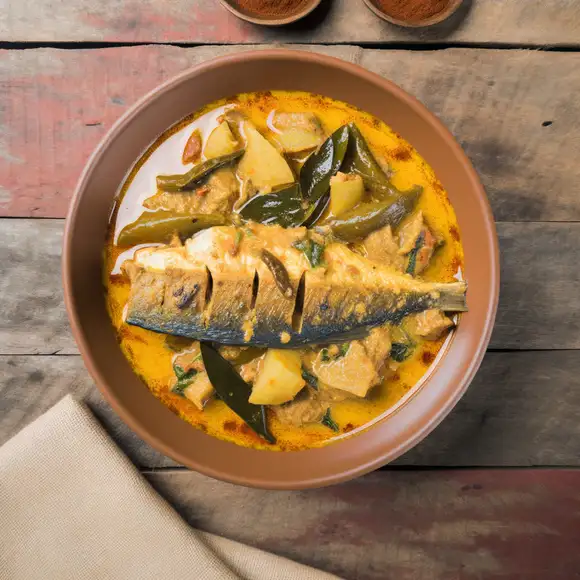



If you ever find yourself in Goa,don’t miss out on Vasco da Gama — it’s like the heartbeat of the region,buzzing with a unique blend of old-world charm and lively coastal energy. Walking through its streets,you’ll catch the salty breeze from the Arabian Sea mingling with the aroma of sizzling street food stalls. The city hums with the chatter of locals and the distant call of fishermen bringing in their fresh catch,creating a soundtrack that feels both vibrant and comforting. Vasco da Gama isn’t just a gateway port; it’s a place where cultures collide beautifully. You’ll see Portuguese colonial architecture standing proudly alongside colorful markets filled with spices,textiles,and handcrafted trinkets. The city’s character is warm and welcoming — people here have a laid-back friendliness that makes you feel instantly at home. Grab a plate of Goan fish curry or sample some spicy vindaloo at a local eatery,and you’ll taste the rich history and passion that flavors every dish. What really makes Vasco da Gama special is its connection to the sea. Whether you’re strolling along the harbor watching fishing boats bobbing gently or catching a sunset that paints the sky in fiery oranges and pinks,there’s a peaceful rhythm here that invites you to slow down and soak it all in. It’s a place where the past and present dance together,leaving you with stories and sensations you won’t forget anytime soon.
The information on this page is currently being reviewed by Tripkliq and should be used as a guide only
Eng word: Hello
Eng pronunciation: Namaskar
Local language: नमस्कार
Eng word: Goodbye
Eng pronunciation: Aavay
Local language: आवय
Eng word: Thank you
Eng pronunciation: Dhanyavaad
Local language: धन्यवाद
Eng word: How much
Eng pronunciation: Kite
Local language: किते
Eng word: Toilet
Eng pronunciation: Shauchalay
Local language: शौचालय
Eng word: Help me
Eng pronunciation: Maka madat kar
Local language: माका मदत कर
Eng word: Yes
Eng pronunciation: Haav
Local language: हांव
Eng word: No
Eng pronunciation: Naay
Local language: नाय
Eng word: Excuse me
Eng pronunciation: Maka maaf kar
Local language: माका माफ कर
Vasco da Gama, the city, is named after the renowned Portuguese explorer Vasco da Gama, who was the first European to reach India by sea, linking Europe and Asia for the first time by ocean route.
The city of Vasco da Gama was founded in 1543 by the Portuguese, making it one of the oldest cities in Goa with a rich colonial history.
Vasco da Gama is home to the Mormugao Port, one of the most important ports in India, which has been a key maritime hub since the Portuguese era.
Built in 1570, St. Andrew's Church is one of the oldest churches in Goa, showcasing beautiful Portuguese architecture and serving as a significant religious site.
The Naval Aviation Museum in Vasco da Gama is the only one of its kind in Asia, displaying a fascinating collection of vintage aircraft and naval equipment.
Baina Beach is a popular tourist spot in Vasco da Gama, known for its scenic beauty and historical significance as a landing site for Portuguese explorers.
Constructed in 1624, Mormugao Fort was built by the Portuguese to protect the Mormugao port and is a testament to the city's strategic importance during colonial times.
Vasco da Gama is well-connected by the South Western Railway, with the Vasco da Gama railway station being one of the oldest and busiest in Goa, facilitating easy travel for tourists.
The city is a cultural melting pot, reflecting a blend of Portuguese and Indian cultures, evident in its architecture, cuisine, and festivals.
In Vasco da Gama, the most common Power Adaptor is Type C, Type D, Type M.







A spicy and tangy prawn pickle made with vinegar, spices, and sometimes tomatoes, often served as a side dish or condiment.

A rich and aromatic curry made with chicken or lamb, cooked with roasted spices and coconut, known for its complex flavors.

A fiery and flavorful curry made with marinated meat (usually pork or chicken) cooked with vinegar, garlic, and a blend of spices, originating from Portuguese influence.

A traditional Goan dessert made from layers of coconut milk, sugar, and eggs, baked to create a rich and sweet treat.

A staple in Goan cuisine, this dish features fresh fish cooked in a tangy coconut milk-based curry, flavored with spices like turmeric, coriander, and tamarind.

A spicy and tangy pork dish cooked with vinegar and spices, often served with sannas or rice, reflecting the Portuguese influence in Goan cuisine.

Soft and fluffy steamed rice cakes, often slightly sweet, made with fermented rice and coconut, typically served with curries.
If you ever find yourself wandering through Panaji,you’ll immediately notice its laid-back charm that feels like a gentle hug after the bustle of bigger cities. The streets hum softly with the rhythm of daily life—rickshaws weaving past pastel-colored Portuguese houses,the distant chime of church bells mingling with the chatter of locals sipping strong,sweet chai at corner cafes. There’s a calmness here,but it’s alive,like the city is quietly inviting you to slow down and soak it all in.
Walking along the Mandovi River promenade,the air carries a salty tang mixed with the scent of sizzling Goan spices from nearby stalls. You’ll catch the laughter of children playing and the occasional call of fishermen bringing in their catch,while the sun dips low,painting the sky in shades of orange and pink. It’s the kind of place where you can sit for hours,watching boats drift lazily by,feeling the warm breeze on your skin.
Panaji’s soul is a beautiful blend of cultures—Portuguese influences peek out in the architecture and the local cuisine,where you can savor dishes like spicy vindaloo or sweet bebinca that tell stories of centuries-old traditions. The city’s pace encourages you to explore its quaint lanes,discover vibrant markets,and connect with friendly faces who are always ready to share a story or a smile. Visiting Panaji feels less like ticking off a destination and more like stepping into a living,breathing postcard that stays with you long after you leave.
Imagine stepping into a city that pulses with energy,where every street corner hums with life and stories waiting to be discovered—that’s Mumbai for you. The moment you arrive,you’re wrapped in a vibrant tapestry of sounds:the rhythmic clatter of local trains,the lively chatter of street vendors,and the distant call of temple bells blending with honking rickshaws. The air carries a mix of spices from roadside stalls,mingling with the salty breeze from the Arabian Sea,creating an intoxicating scent that’s uniquely Mumbai.
Walking through its bustling lanes,you’ll see a kaleidoscope of colors—bright saris fluttering in the wind,intricate colonial architecture standing proudly beside sleek skyscrapers,and street art that tells tales of the city’s soul. Mumbai’s character is a beautiful contradiction:it’s fast-paced yet welcoming,chaotic yet deeply rooted in tradition. The city’s heartbeat is its people—dreamers,artists,and entrepreneurs who wear their resilience and warmth like a badge of honor.
And then there’s the food—oh,the food! From the tangy,spicy street-side vada pav that feels like a warm hug,to the rich,aromatic biryanis and fresh seafood by the sea,every bite is a celebration of flavors. Mumbai invites you to lose yourself in its maze of neighborhoods,each with its own rhythm and charm,promising moments of surprise and connection. It’s not just a place to visit; it’s a city that stays with you long after you’ve left.
A historic port city in Kerala,renowned for its backwaters,Chinese fishing nets,and the nearby Vypin and Willingdon islands.
ExploreA charming coastal city with French colonial architecture,pristine beaches,and nearby islands like Paradise Island for water sports.
ExploreImagine stepping into a place where the ocean’s turquoise hues stretch endlessly,and the gentle hum of waves lapping against coral reefs becomes your daily soundtrack—that’s Lakshadweep for you. This cluster of islands feels like a serene escape from the world’s rush,where time slows down and the air carries a salty freshness mixed with the faint scent of coconut palms. Walking along the powdery white beaches,you’ll notice the vibrant marine life just beneath the surface,inviting you to dive in and explore a kaleidoscope of colorful fish and coral gardens.
What truly sets Lakshadweep apart is its intimate connection to the sea and the warm-hearted islanders who live in harmony with nature. The culture here is deeply rooted in simple,joyful traditions—imagine sharing freshly caught seafood grilled over open flames,flavored with local spices that tease your taste buds,while the sun dips below the horizon in a blaze of orange and pink. The islands’ laid-back vibe encourages you to slow down,breathe deeply,and savor moments of quiet beauty.
Beyond the beaches,the islands offer a glimpse into a unique way of life shaped by the ocean’s rhythms. You’ll find small villages where fishing boats bob gently in the harbor,and children’s laughter mingles with the calls of seabirds overhead. Lakshadweep isn’t just a destination; it’s a feeling—a peaceful,soulful retreat that stays with you long after you leave.
If you ever find yourself craving a place where the ocean breeze carries stories of adventure and the rhythm of waves sets your pace,Port Blair is where you want to be. This city feels like a gentle invitation to slow down and soak in the raw beauty of island life. The moment you step off the ferry or plane,the salty air mingled with the scent of tropical flowers wraps around you like a warm hug. Palm trees sway lazily against a backdrop of turquoise waters,and the chatter of locals blends with the distant call of seabirds,creating a soundtrack that’s both lively and soothing.
Port Blair isn’t just a gateway to the Andaman Islands; it’s a place where history whispers through the walls of the Cellular Jail,a somber yet inspiring reminder of India’s past. But beyond its historical weight,the city pulses with a laid-back charm—colorful markets burst with fresh seafood,exotic fruits,and spices that tease your senses. Grab a plate of freshly caught fish grilled with local herbs,and you’ll taste the ocean’s essence in every bite.
What makes Port Blair truly special is its blend of cultures and the warmth of its people. You’ll find a mix of indigenous traditions and influences from across India,all coexisting in a relaxed,welcoming vibe. Whether you’re wandering along Corbyn’s Cove Beach at sunset or chatting with fishermen mending their nets,there’s a genuine friendliness here that makes you feel like you belong. It’s a place that invites you to explore,reflect,and simply be.
Some beach shacks may inflate bills or add hidden charges for food, drinks, or services like sunbeds.
Unlicensed money exchangers may offer attractive rates but shortchange tourists or provide counterfeit currency.
Scammers may sell counterfeit tickets to popular events or parties, leaving tourists stranded at the entrance.
Vendors may sell fake or low-quality souvenirs claiming they are authentic Goan handicrafts.
Unlicensed guides may approach tourists offering tours but provide subpar services or lead them to overpriced shops for commissions.
Some restaurants may overcharge tourists for seafood by not displaying prices or inflating the weight of the catch.
Crowded areas like markets and beaches are hotspots for pickpocketing and bag snatching targeting distracted tourists.
Rental agencies may charge hidden fees or claim damages to the vehicle upon return to extract extra money.
Tourists may be offered spiked drinks at bars or parties, leading to theft or other crimes.
Drivers may refuse to use the meter and charge exorbitant fares, especially for tourists unfamiliar with local rates.
The use, possession, and trafficking of drugs are strictly prohibited in Vasco da Gama and the rest of India. The country has stringent anti-drug laws, and violations can result in severe penalties, including long-term imprisonment and heavy fines. Tourists should avoid any involvement with illegal drugs to prevent legal complications.
In Vasco da Gama, as in the rest of India, smoking is prohibited in public places such as restaurants, bars, public transport, and parks. There are designated smoking areas where smoking is allowed. Violating these regulations can result in fines. Tourists should look for 'No Smoking' signs and adhere to local rules to avoid penalties.
Vaping is subject to similar regulations as smoking in Vasco da Gama. The Indian government has imposed a ban on the production, import, and sale of e-cigarettes and vaping products. Tourists should be aware that carrying or using vaping devices can lead to legal issues, including fines and confiscation of the devices.
What are other people saying about Vasco da Gama?
Recent Social posts about Vasco da Gama
There is nothing to show you for now.